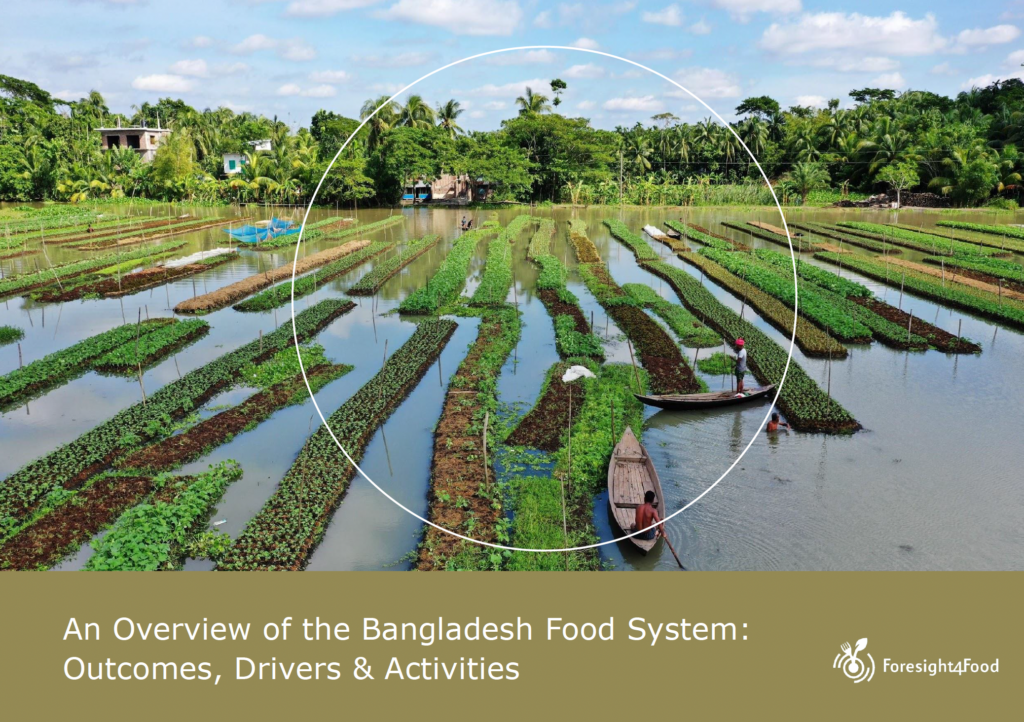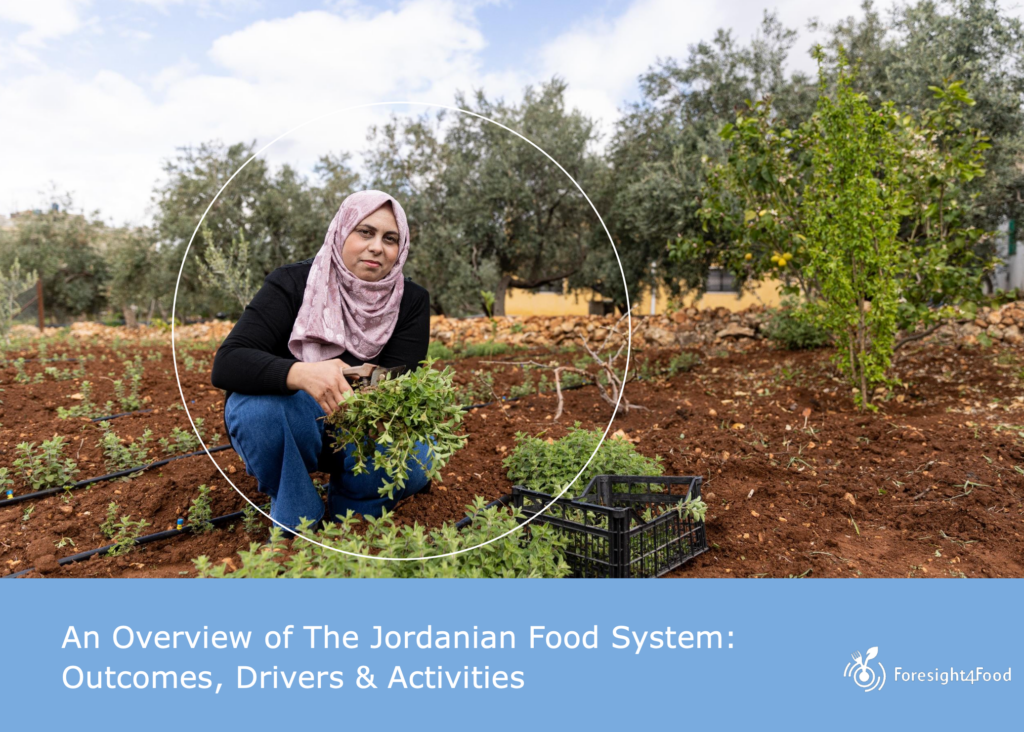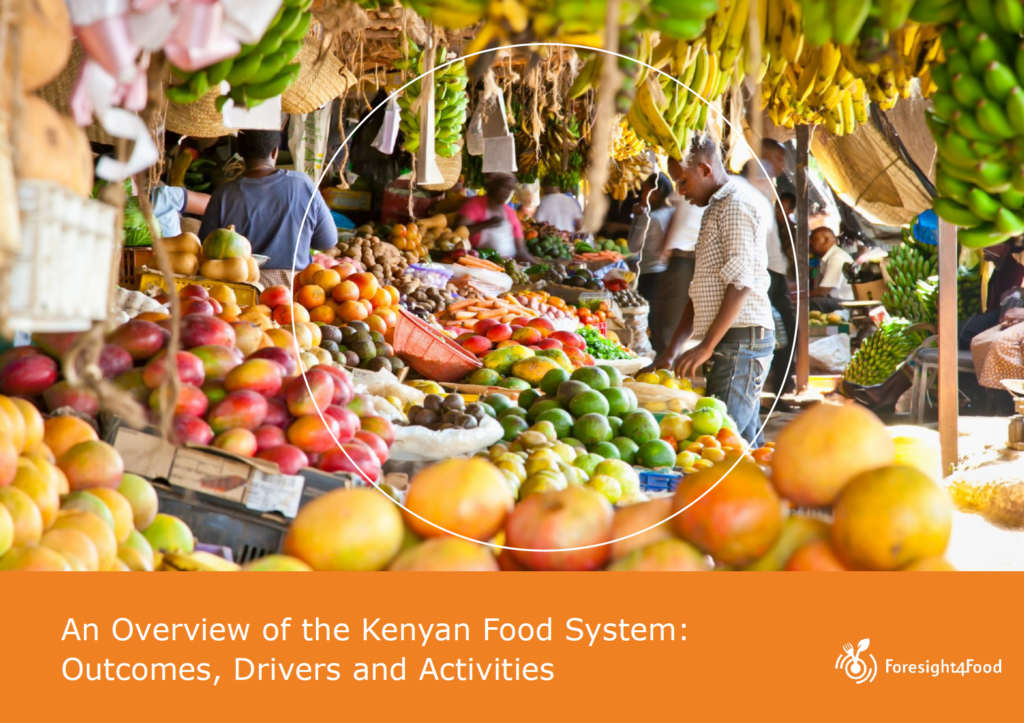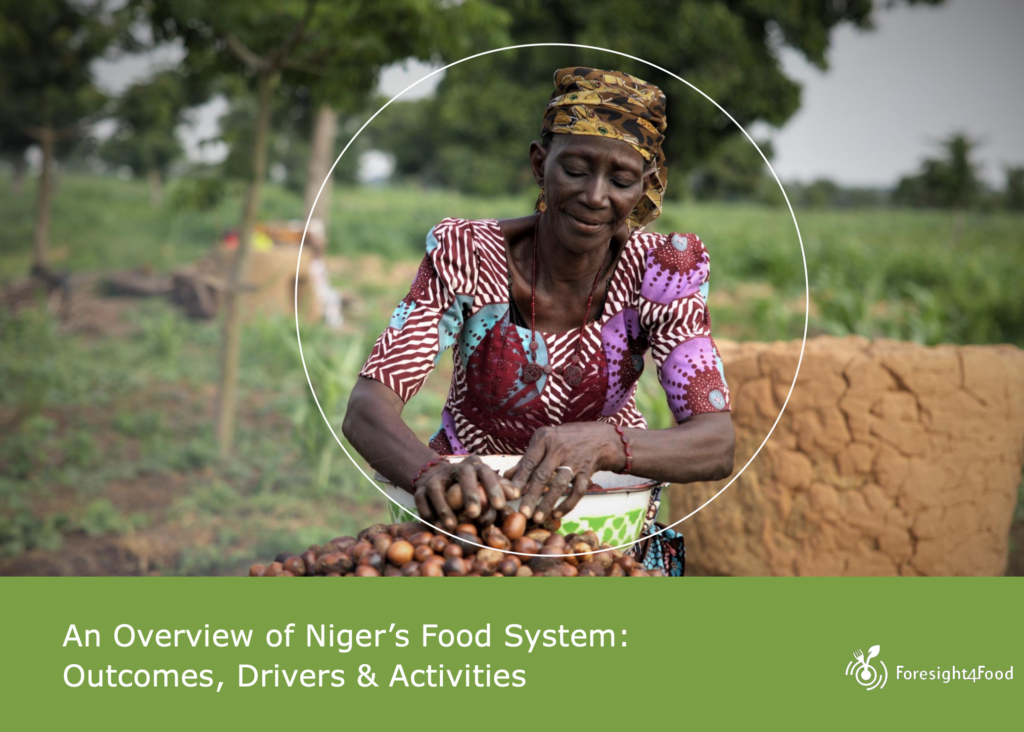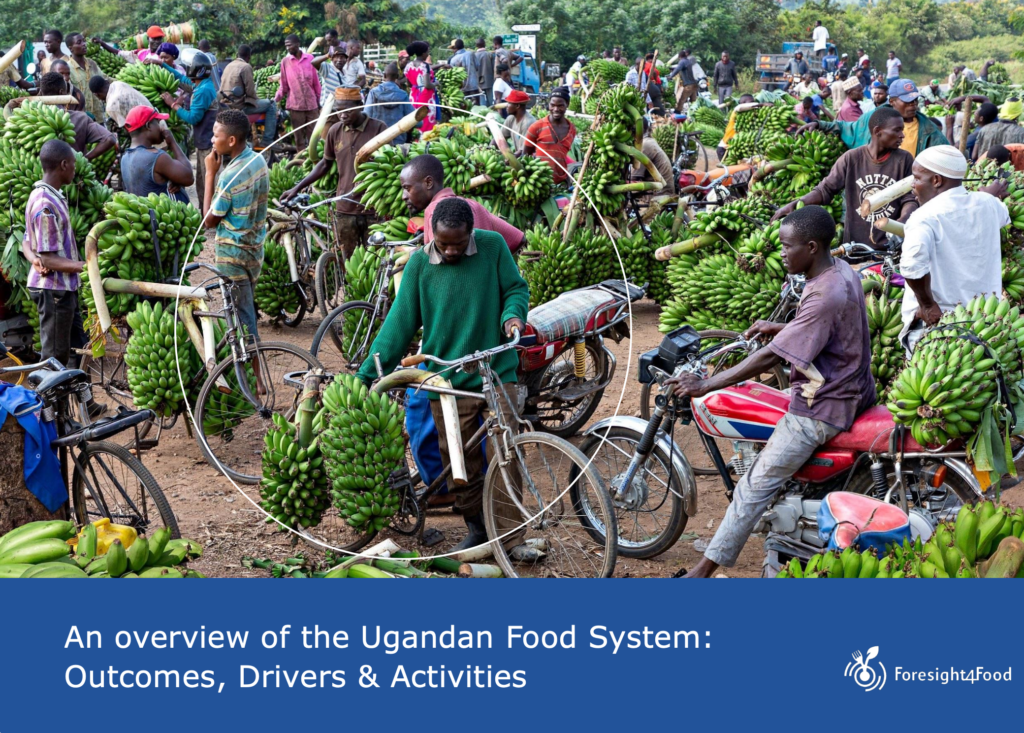By Zoe Barois
Like many other countries, Bangladesh is working to develop it’s Food Systems Transformation Action Plan. This will be presented during the United Nations Food Systems Summit Plus 4 Stocktaking event. On November 6 and 7, Foresight4Food collaborated with GAIN Bangladesh to host a workshop on how foresight could contribute to the development of the Action Plan.
If transforming food systems were easy, it would have been done! But it’s not. Discussions dug into deeper questions about HOW change can be brought about and the implications of this for action in Bangladesh.
The participatory and dynamic workshop brought together policymakers, researchers, youth leaders, key UN organisations and members of the private sector. The workshop served two purposes, first to help clarify directions for the Action Plan, and secondly, to take forward the work on using foresight to help drive food systems change.
Discussion during the workshop focused on the five commitment pathways:
- Nourish all people
- Boost Nature-based Solutions
- Advance Equitable Livelihoods, Decent Work & Empowered Communities
- Build Resilience to Vulnerabilities, Shocks and Stresses and
- Accelerating the Means of Implementation
Validating scenarios for the future of food systems in Bangladesh
It was great to engage in discussions around four visual future scenarios. These were developed using rich pictures during a lively multistakeholder event in June earlier this year. Future scenarios are an excellent way to open discussions around what different stakeholders see as a desirable future. Interestingly, these do not always align as the implications would vary depending on what outcomes you’re seeking. At the end of the day, a poor farmer will desire different things when compared to a corrupt businessman!
The scenarios displayed different outcomes based on these uncertainties:

Equity – Would there be high or low levels of equity?
Climate resilience – we all know that climate change is happening, but whether Bangladesh will have high or low climate resilience is definitely in question
Healthy food consumption – Would people in Bangladesh be eating traditional diets or would they follow a diet that resembles something like a North American diet, something seen in many parts of the world.
Business structure – would Bangladesh have a diversified or consolidated business structure, dominated by a few large conglomerates
Creatively naming these scenarios helps convey the messages. So we had a fun exchange where groups came up with poetic Bangladeshi names to better describe the scenarios. Part of the validation will be to update these, helping spur action towards the most desired and away from the least desired future.
Unpacking five critical issues
Key issues blocking progress towards food systems change in Bangladesh relate to:
- The cost of a healthy diet in addressing malnutrition
- Climate resilience
- The role of social protection programmes in shaping food systems change
- Fruit and vegetable production
- Land use change and dietary patterns
These key themes were the result of a longer participatory process that emerged from the food systems map of Bangladesh. Diving into these topics, FoSTr’s five research partners shared their work on the key trends, challenges, and opportunities within each theme. Exploring these themes using a future lens can help clarify desired directions of change.
The power of causal loop mapping
How often do you get policymakers, youth and researchers around one table, heavily immersed in discussion using sticky notes and flip charts? My response: not often enough! This combination of actors is rarely seen but proves oh so valuable in uncovering insights previously hidden from each sector. The tool casual loop mapping, may be familiar to some. It’s a systems thinking tool where the interconnections between elements are mapped and the direction of causality identified. It’s a great way to map out the elements within a system and identify levers of change – small actions that lead to a large impact. For each of the commitment pathways, this casual loop mapping was performed. Insights like forming alliances between farmers and entrepreneurs to boost sustainable farming practices, or using the power of advertising to improve healthy food consumption and inspire healthy lifestyles were uncovered.
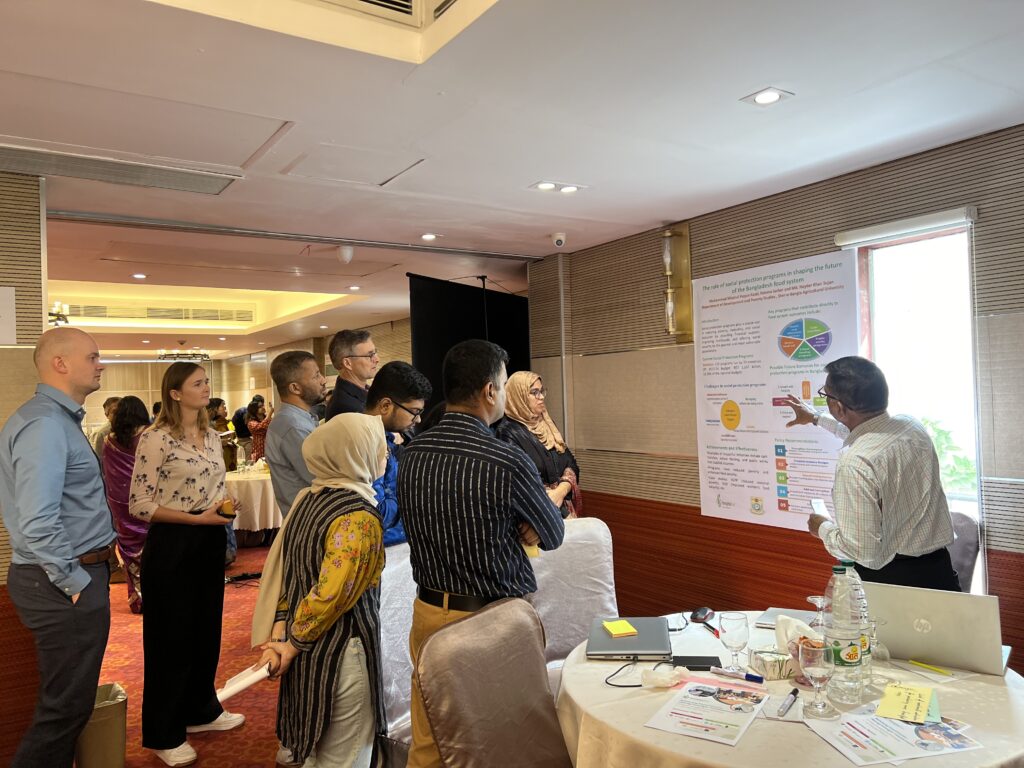
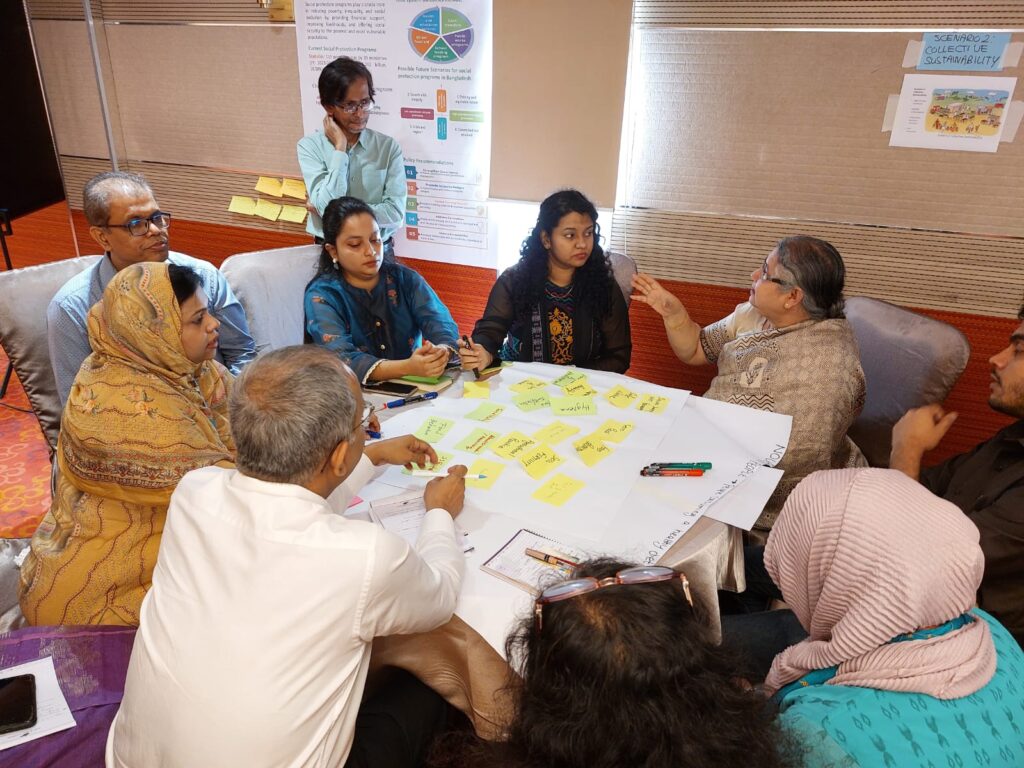
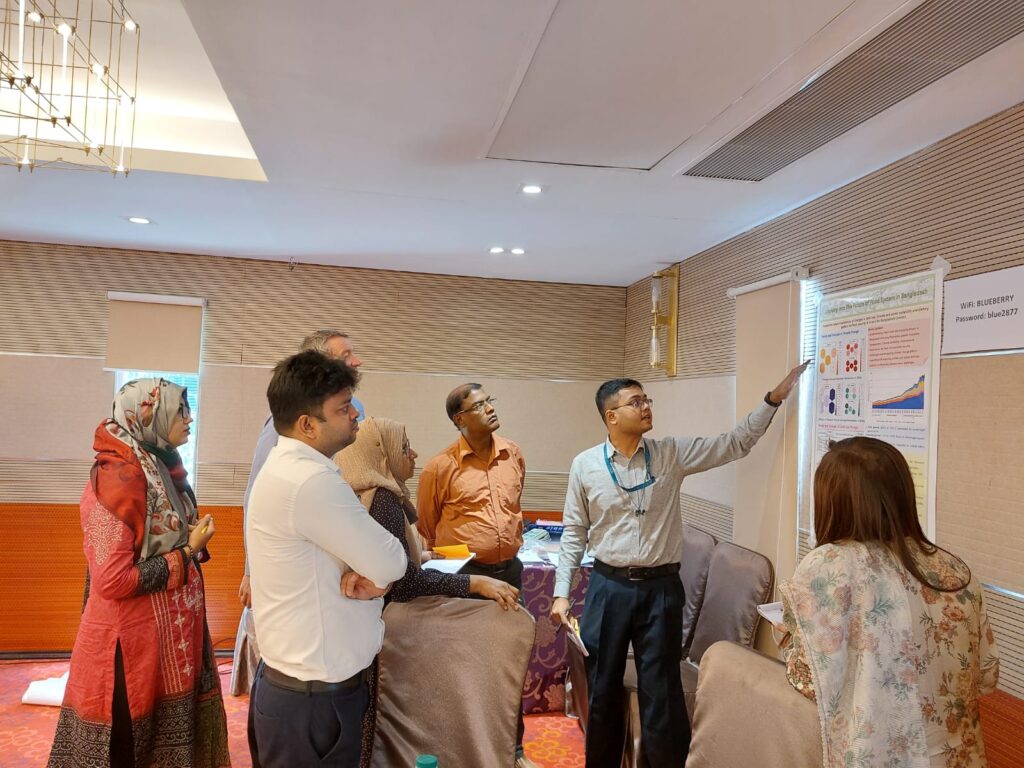
Reflections
Whilst having many people come together who don’t usually converse – the so-called ‘breaking the siloes’ is a huge achievement in itself, the task of writing yet another policy document looms above our heads. Everyone in the room has appeared here for a reason – which I hope is to create the change we need, a future that we all desire. After such positive discussions and recognition that we need to act – and act now, the fear I have is we will all fall into the same trap. The trap of being consumed by our busy agendas and becoming frustrated that yet another policy document has to be produced. Leading to un-actionable and hugely categorised actions. We don’t want this Plan of Action to become another document that has great suggestions but continues to lack the HOW. Let us think about how will these actions be implemented.
Foresight helps us to keep the bigger picture in mind, where do we want to go and where do we want to be in the future? Let’s use this thinking to help us prioritise and select key activities to implement. Working together to do so.
The Foresight for Food System Transformation (FoSTr) programme, led by Foresight4Food, is now two years into its journey of helping shape more sustainable, inclusive, and resilient food systems. With increasing uncertainties affecting global food systems—from climate change to economic challenges—the need for foresight and scenario analysis has never been more critical.

Running from 2022 to 2025, the programme is funded by the Dutch Ministry of Foreign Affairs through an IFAD grant. Based on the approach of the Foresight Framework, the programme focuses on supporting four key countries: Bangladesh, Jordan, Kenya, and Uganda.
Since its commencement, we have seen tremendous strides in advancing the key objectives of the FoSTr programme across multiple fronts. This blog highlights the progress and impact of the FoSTr programme and the exciting path ahead.
In-Country Impact: Strengthening Foresight Processes
In each of the focus countries, national foresight processes gained momentum, engaging a wide range of stakeholders, including government bodies, research institutions, and community representatives. In total, 403 individual stakeholders participated in in-country workshops across the four countries, contributing to meaningful conversations about the future of food systems.
Here is a quick overview of FoSTr programme’s progress in each of the focus countries:
Bangladesh – Strong government buy-in has been established, with collaboration from the Ministry of Food and other key players, all contributing to the national food system transformation agenda.
Jordan – Partnerships with the Ministry of Agriculture and other government entities have positioned FoSTr as a key advisor, particularly in driving forward the work of the newly established Food Security Council.
Kenya – Foresight analysis has been particularly active at both the national and county levels, with significant involvement from the Nakuru and Marsabit County governments.
Uganda – FoSTr is closely aligned with the Uganda Planning Authority, helping develop foresight tools for future food system planning.
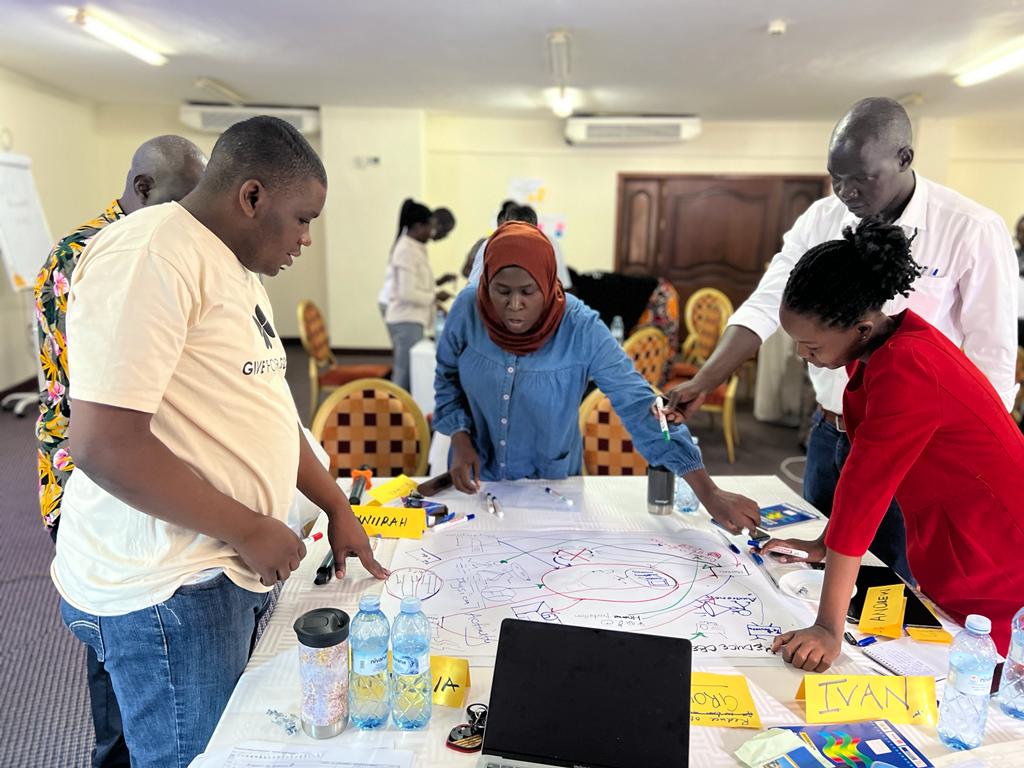
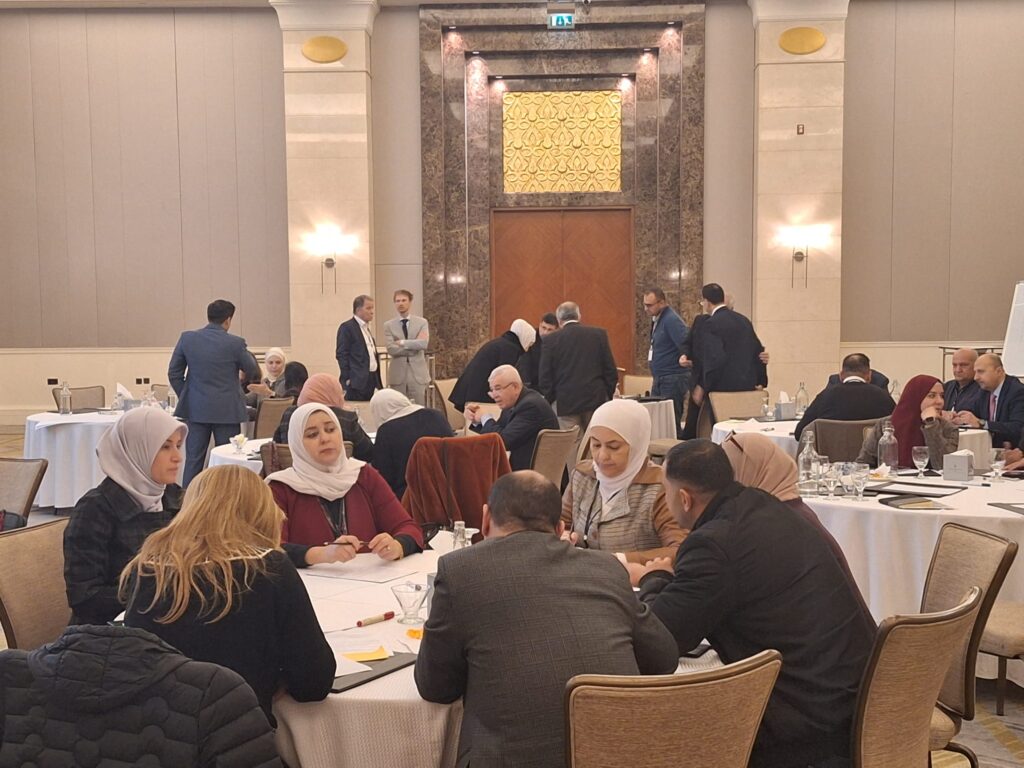
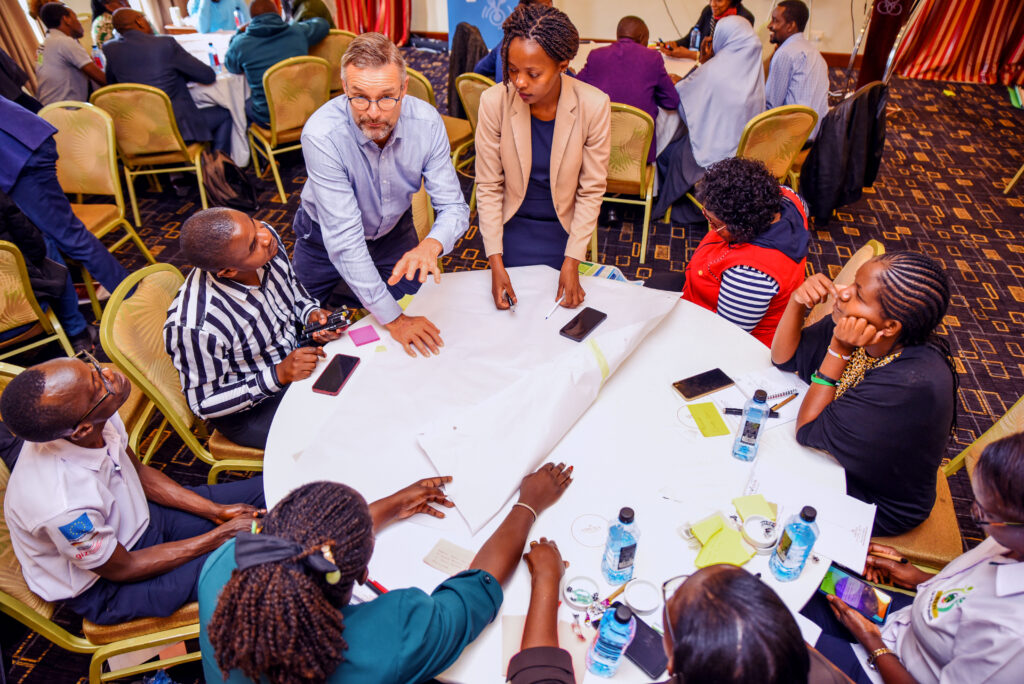
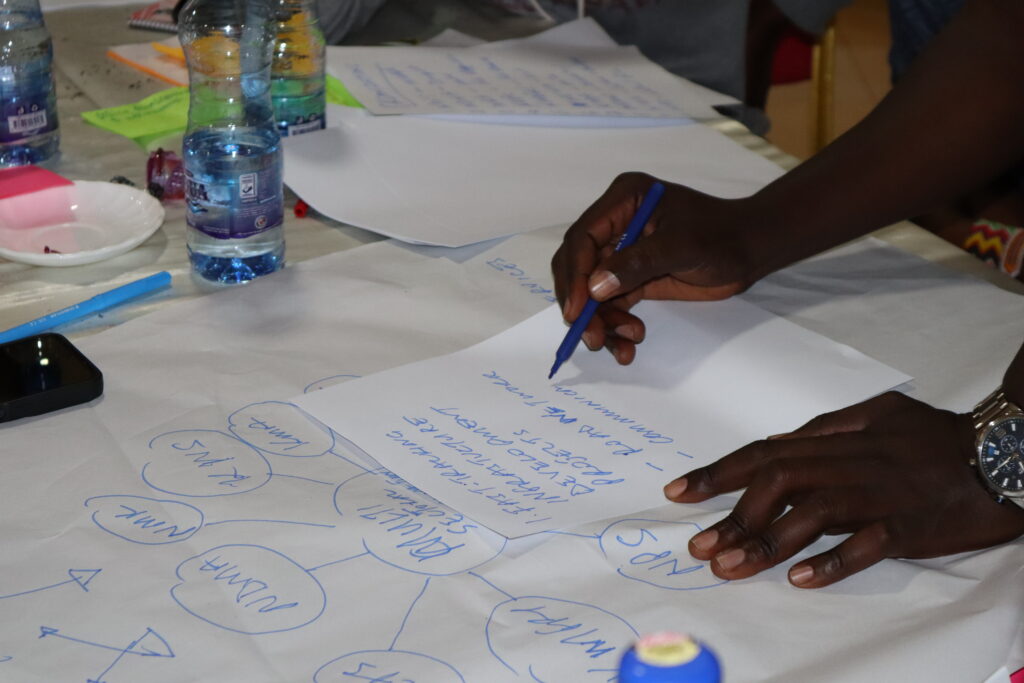


Global Collaboration: Building a Brokering Hub
On a global scale, FoSTr expanded its network of foresight and food systems practitioners, deepening collaboration across organizations like the Forum for Agricultural Research in Africa (FARA), the Global Alliance for Improved Nutrition (GAIN) in Bangladesh, and a number of renowned research institutes in the focus countries.
The work of FoSTr programme was very well-received at the 4th Global Foresight4Food Workshop in Dhaka, where more than 120 foresight practitioners from Asia, Africa, and Europe gathered to share insights on foresight methodologies and food system challenges.
Read also:
Using Foresight to Re-imagine the Future of Food Systems: Foresight4Food holds its 4th Global Meeting – by Jim Woodhill
In a highly interactive week, participants engaged in a masterclass on foresight approaches, shared their experiences and lessons, heard from thought-leaders on food systems and foresight, and identified ways of strengthening foresight practice in their own countries and regions…
A Start to the Foresight Process: Food Systems Maps
As a part of the foresight process, there is a need to have a collective understanding of the food system in different contexts. Hence, the Foresight4Food FoSTr team in collaboration with our facilitators and research partners in each focus country, created comprehensive food systems reports mapping the dynamics, trends, drivers, and activities within the food system.
These Food System Maps offer an initial snapshot of the current food system status in the focus countries and are intended to inform a more comprehensive foresight process. As the dynamics, trends, drivers, and activities within the food system continually change, these reports welcome ongoing reflection and discussion.
Knowledge Base
FoSTr also played a vital part in strengthening the Foresight4Food Resource Portal, which provides access to Foresight Studies, key data around Food System Drivers and Outcomes, a database of Foresight Initiatives, and other academic literature that helps food systems practitioners develop better Foresight Models.
The Foresight4Food Resource Portal is regularly updated with the latest research and emerging studies as well as products and resources that come out of different programme activities.
Read also:
The Complexity of Global Drivers of Food System Transformation – by Bhawana Gupta
The global food system needs to be transformed. It needs to deliver better health and improved livelihoods while protecting the environment and minimizing negative social impacts. However, there are many interconnected factors playing a role. Food Systems are complex…
Overcoming Challenges
Like any ambitious programme, FoSTr encountered its share of challenges. These included navigating political instability in some focus countries. Meanwhile, navigating the political economy of food systems—especially where entrenched power dynamics and vested interests are at play—required FoSTr to strike a delicate balance between supporting ongoing policy processes and introducing more transformative ideas for change.
The Way Forward
As the Foresight4Food FoSTr programme enters its third and final year, several key objectives will guide the remaining activities:
Brokering Foresight Processes: Continue to build connections with national stakeholders and existing initiatives, ensuring that foresight insights are integrated into policy-making and planning processes.
Capacity Building: Organize intensive face-to-face training workshops to further enhance foresight facilitation skills and broaden participation from underrepresented groups, including the private sector and youth.
Scenario Analysis and Policy Recommendations: Complete the ongoing scenario analyses and translate these into clear policy recommendations that will guide national food system transformation agendas.
Sustaining Momentum Beyond 2025: Establish sustainable communities of practice that can continue to drive foresight activities beyond the programme’s official end.
Conclusion: A Transformative Journey
In an era where global food systems are under immense pressure due to climate change, population growth, and shifting socio-economic landscapes, forward-thinking approaches are critical to ensuring food security and sustainability.
The Foresight4Food FoSTr programme has made significant headway in its mission to advance food system foresight processes in Bangladesh, Jordan, Kenya, and Uganda while building a broader global network of foresight practitioners. As we look ahead to the final year, the focus will be on translating foresight insights into action, empowering national stakeholders, and ensuring that the work of FoSTr continues to have a lasting impact on food systems worldwide.
Bonus: FoSTr Facilitators Insights
As the Foresight4Food FoSTr programme continues to foster systemic change in global food systems, the programme facilitators will be sharing their observations on the work and progress of FoSTr programme in their respective countries through insightful blogs. Watch this space and our social media channels for more updates.
By Zoe Barois
Over the past year, the Foresight4Food Foresight for Food System Transformation – FoSTr team and our country partners have begun a foresight process in Jordan, Uganda, Kenya, Bangladesh, and Niger to support national food system transformation. As an initial step, a collective understanding of the food system in different contexts was needed. Hence, the Foresight4Food team in collaboration with our facilitators and research partners in each focus country, created comprehensive food systems reports mapping the dynamics, trends, drivers, and activities within the food system.
Being a lead on food system mapping, I’m sharing my reflections on the process in this blog.
We started with a scoping phase using the Foresight4Food foresight framework, which allows for flexibility and contextual adaptation. This phase involved identifying key stakeholders, understanding their interests, and assessing current and future concerns.
Our next goal was to foster a shared understanding of the food system’s key dynamics, outcomes, drivers, and activities to identify trends and uncertainties. This collective understanding forms the foundation for a participatory process using foresight and scenario analyses to support meaningful food systems change.
The second step, system mapping, was done in collaboration with country facilitators and research teams. We used the Foresight4food framework to identify key food system outcomes, activities, and drivers, considering their interaction with the broader environment. Data were compiled from national and global sources and generated through participatory workshops.
In addition to providing an overview of current status and trends, we conducted a deeper analysis using causal loop diagrams created with research partners during workshops. This approach helped identify trade-offs and synergies, informing actions to improve food system outcomes. We also noted recurring patterns that affect feedback loops, further clarifying the system’s structure.
These reports offer an initial snapshot of the current food system status and are intended to inform a more comprehensive foresight process. As the dynamics, trends, drivers, and activities within the food system continually change, these reports welcome ongoing reflection and discussion.
